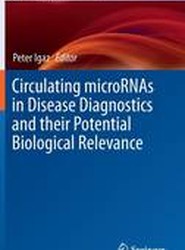(To see other currencies, click on price)
MORE ABOUT THIS BOOK
Main description:
Volume I provides an in-depth discussion of the most recent developments of crucical biosensor components. It concentrates on the interface between the analyte phase and the detector, namely, the implementation of novel recognition elements, including nucleic acids, and of leading-edge technology in the construction of responsive thin layers. Thus, the reader can obtain a foretaste of achievable future progress in the field.
Contents:
Present state and frontiers in biosensorics.- New recognition elements.- Imprinting techniques in synthetic polymers - new options for chemosensors.- Biomimetic recognition elements for sensor applications.- Screening and characterization of new enzymes for biosensing and analytics.- Phenol-oxidizing enzymes: mechanisms and applications in biosensors.- Enzymes and antibodies in organic media: analytical applications.- Nucleic acid based sensors.- Receptor based chemical sensing.- Genetically modified Escherichia coli for colorimetric detection of inorganic and organic Hg compounds.- Thin layers/Interfaces.- Studies on pyroelectric response of polymers modified with azobenzene moieties.- Polyelectrolyte layer systems.- Foerster energy transfer in ultrathin polymer layers as a basis for biosensors.- Coupling of enzyme reactions to the charge transfer at the interface of two immiscible solvents.- Electrochemistry of heme proteins on organic molecule modified electrodes.- Electron transfer via redox hydrogels between electrodes and enzymes.- Direct redox communication between enzymes and electrodes.- Microbiosensors using electrodes made in Si-technology.
PRODUCT DETAILS
Publisher: Springer (Birkhauser Verlag AG)
Publication date: September, 2011
Pages: None
Weight: 522g
Availability: Available
Subcategories: General Issues
From the same series



































